![]()
![]()
![]()
![]() BURUNDI. 98% of the people we told had no idea where this tiny nation was on the map. Well, that was if they knew it was a country! It is understandable. Burundi is a landlocked country nestled in the heart of Africa. It is often overlooked by its neighbours – Tanzania and Rwanda… and overshadowed by DRC. While small, this vibrant country has so many hidden gems waiting to be discovered. It is not on the main list for adventure tourism, but if you’re looking for untouched beauty, diverse landscapes, and centuries-old tradition, Burundi needs to be on your list.
BURUNDI. 98% of the people we told had no idea where this tiny nation was on the map. Well, that was if they knew it was a country! It is understandable. Burundi is a landlocked country nestled in the heart of Africa. It is often overlooked by its neighbours – Tanzania and Rwanda… and overshadowed by DRC. While small, this vibrant country has so many hidden gems waiting to be discovered. It is not on the main list for adventure tourism, but if you’re looking for untouched beauty, diverse landscapes, and centuries-old tradition, Burundi needs to be on your list.
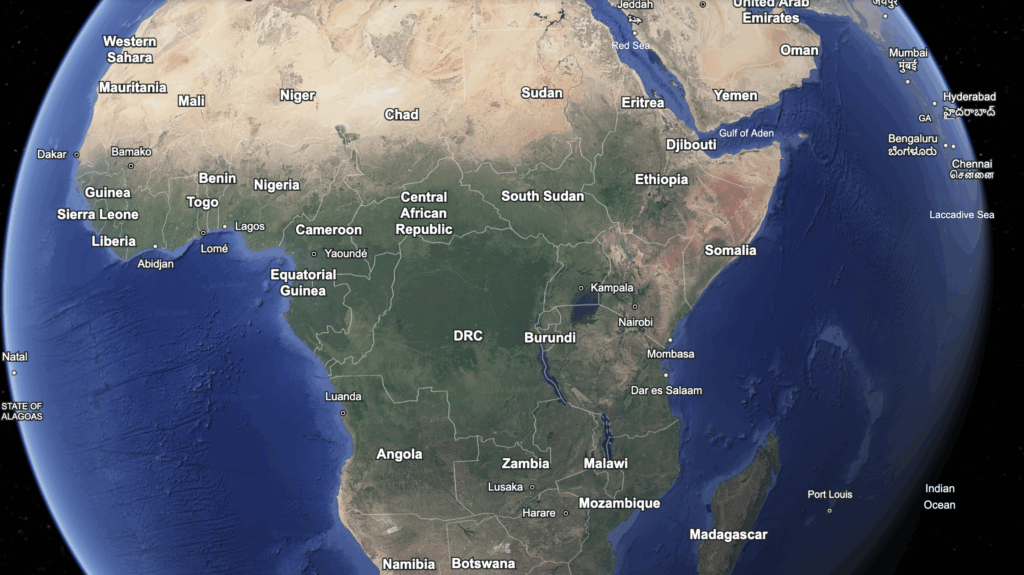
Venture with me to the land few have had the fortune of visiting as we navigate off the beaten path and uncover what other secrets are still waiting to be unfolded! Are you adventurous enough for this journey? Hop on in…
Quick Facts about Burundi
Written as of May 2025:
Currency: Burundian Francs (1 USD = 2 935 BIF)
10th smallest country in Africa
Capital: Bujumbura (economic), Gitega (political)
Population: 14 million – estimated 1.8 million in the capital
Airlines that service BJM: Ethiopian Airlines, Kenyan Airlines, Brussels Airlines, Rwandair, Ugandair
Majority Religion: Christianity (90%)
Official Language: Kirundi, French, English
In Kirundi:
Hello/Peace: Amahoro
Thank you: Murakoze
Understanding Burundi
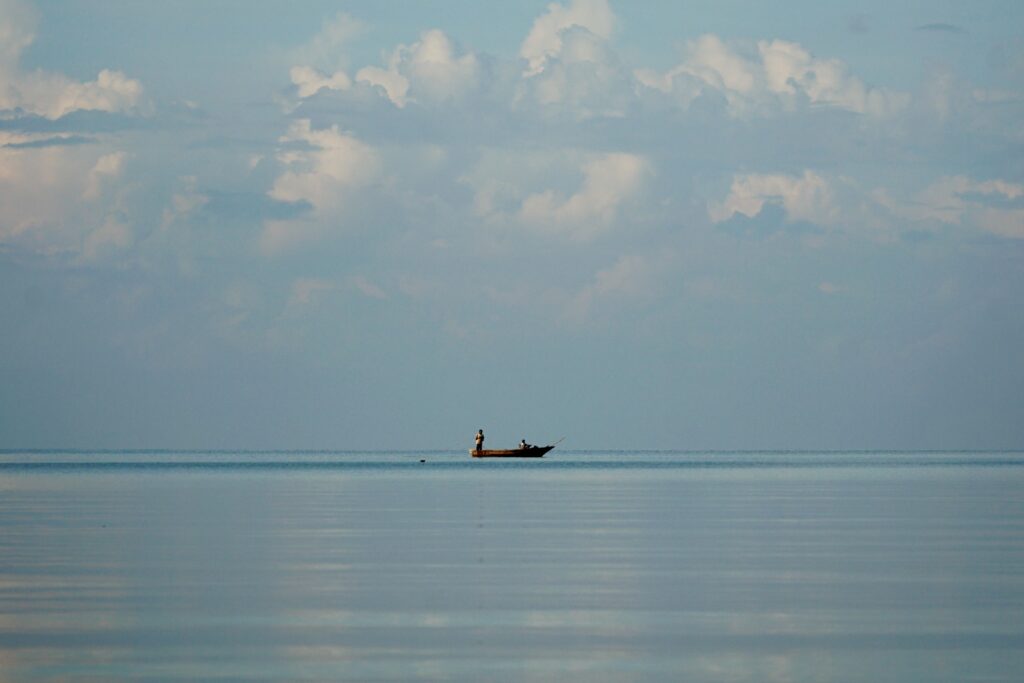
The nation’s history is deep and complex, but hang on as we’re about to go through a cliff’s note version. For centuries, it was ruled by a powerful monarchy, with the Mwami (king) at its center and a structured society rooted in farming, cattle-keeping, and rich traditions. In the late 19th century, Burundi was colonized first by Germany and later by Belgium, who ruled it alongside Rwanda as part of Ruanda-Urundi. The colonial era intensified existing social divisions and laid the groundwork for political instability after independence in 1962.
The decades that followed were marked by tensions and cycles of violence, particularly between the Hutu and Tutsi ethnic groups. The most recent civil war happened between 1993 to 2005. Fortunately, a peace agreement was signed in 2005, which has led to stability and democratic progress. Today, Burundi is emerging as a culturally rich and off-the-beaten-path destination, known for its drumming traditions, natural beauty, and warm hospitality. It is a country where ancient heritage meets hopeful resilience.
Navigating the Heart of Africa
As Burundi is still developing its local infrastructure, travelling may pose some challenges. The country is currently facing a fuel shortage so finding fuel may be an issue. As we wanted to see as much of what this country had to offer, we teamed up with a local guide (Charles from Burundi Discovery Tours) to show us the way.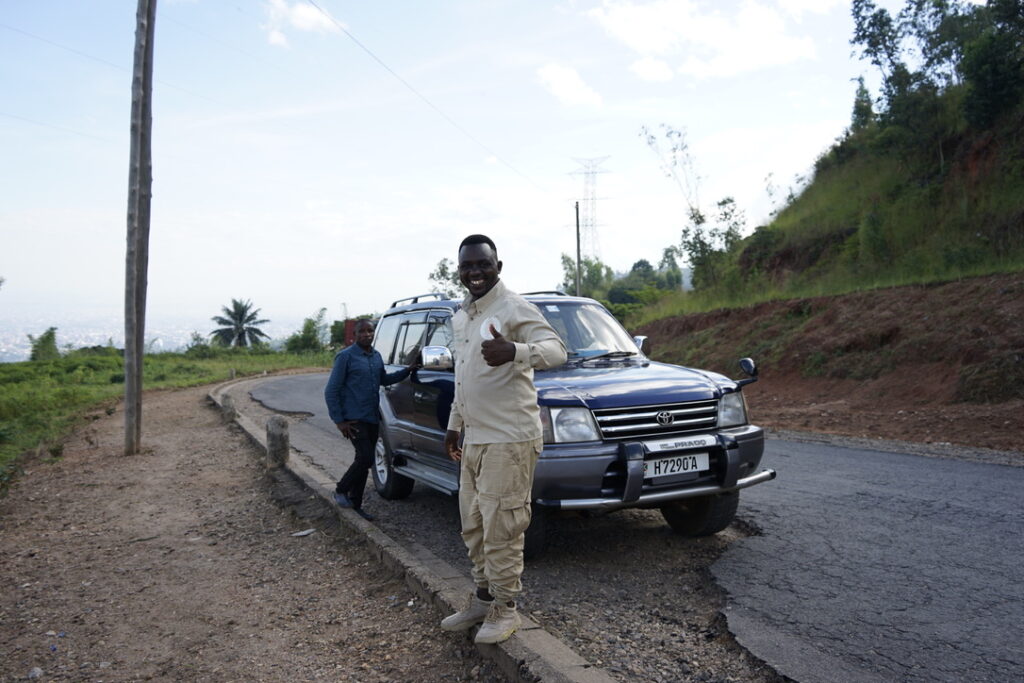
Visas
Depending on your passport country, getting a visa to Burundi is relatively straightforward and simple. If you’re spending < 3 days in the country, you can apply for a transit visa (USD $40). If you’re there for longer, a one month multi-entry visa is your other option (USD $90). Apply via the website. Make sure you have where you will be staying for the first night, a copy of your passport and a passport photo. You’ll get an approval relatively quickly. Ours took a couple of minutes.
Tourist Visa not required: DRC, Kenya, Rwanda, South Sudan, Tanzania, Uganda
Tourist Visa on Arrival (or online application): Everyone else.
At the airport, be prepared to show your visa approval and have USD $90 ready to pay for your visa. While it is not mandatory to apply for a visa online, it certainly does help speed things up slightly. Be prepared for approximately 45 mins to an hour, depending on how many travellers are coming in!
Must See Sights
Burundi might just be East Africa’s best kept secret 😉 . Think lush landscapes, warm hearted locals, and a vibe that feels both raw and real. It’s the kind of place where you’ll hike through untouched hills in the morning and dance with drummers by sunset. These hidden gems aren’t polished for tourists and that’s exactly the magic.
Untouched Nature Wonders
Are you a connoisseur of unspoiled beauty and off-the-beaten-track experiences? Burundi’s natural landscapes are nothing short of breathtaking. From misty rainforests to cascading waterfalls and serene lakes, this small East African gem is packed with raw, underrated charm. Here’s a look at some of the best natural attractions in Burundi that every traveler should add to their itinerary.
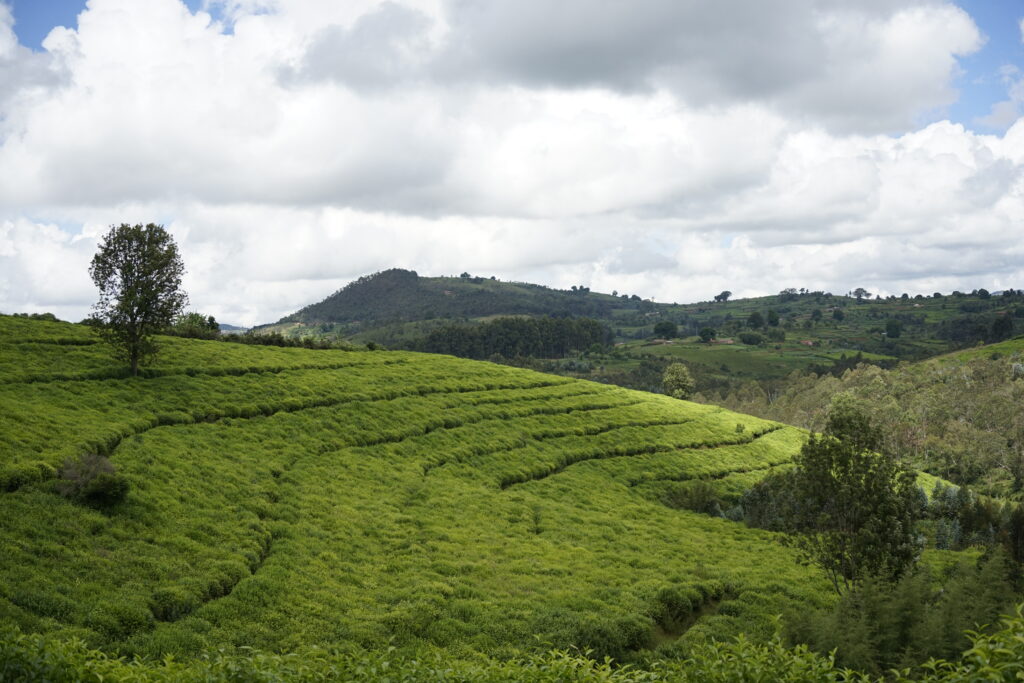
Countryside
Much of Burundi’s countryside is painted in shades of green, thanks to its rich agriculture and dense forest cover. As you drive through the rolling hills, you’ll pass vibrant tea and coffee plantations—two of the country’s top exports. The scenery is peaceful, lush, and quintessentially Burundian. If you’re looking for a taste of local life and nature, the countryside is one of the most authentic things to do in Burundi. Afterall, it is where 90% of the population live!
Karera Waterfalls
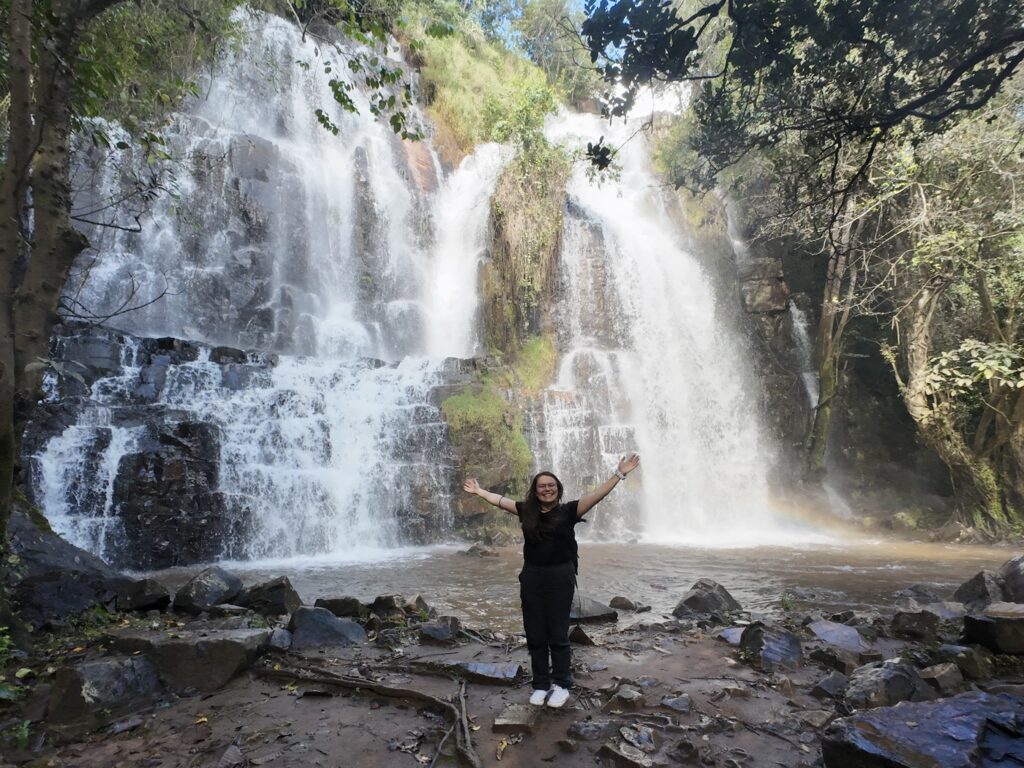
The Karera Waterfalls are a true hidden gem of Burundi. Discovered from the skies (literally, from a plane) in 1952, it opened its doors to its first visitors in the 1980s. This awe-inspiring site is made up of five distinct waterfalls, with the tallest reaching 46 meters and the smallest at 21 meters. Feeling adventurous? Step out onto the 60-meter canopy walkway suspended above Karera I and Karera II for panoramic views over the lush Burundian rainforest. A sight to behold!
Kibira National Park
Tucked away in the northern side of the country, Kibira National Park is the Burundian counterpart to Rwanda’s Nyungwe Forest. This protected area is home to dense jungle, flora, and yes… you guessed it, if you’re lucky chimpanzees! Even if the wildlife is elusive, the park’s trails offer peaceful treks and border the Teza Tea Plantation, the largest in the country. If you’re into eco-tourism or love forest hikes, this is one of the top national parks to visit in Burundi.
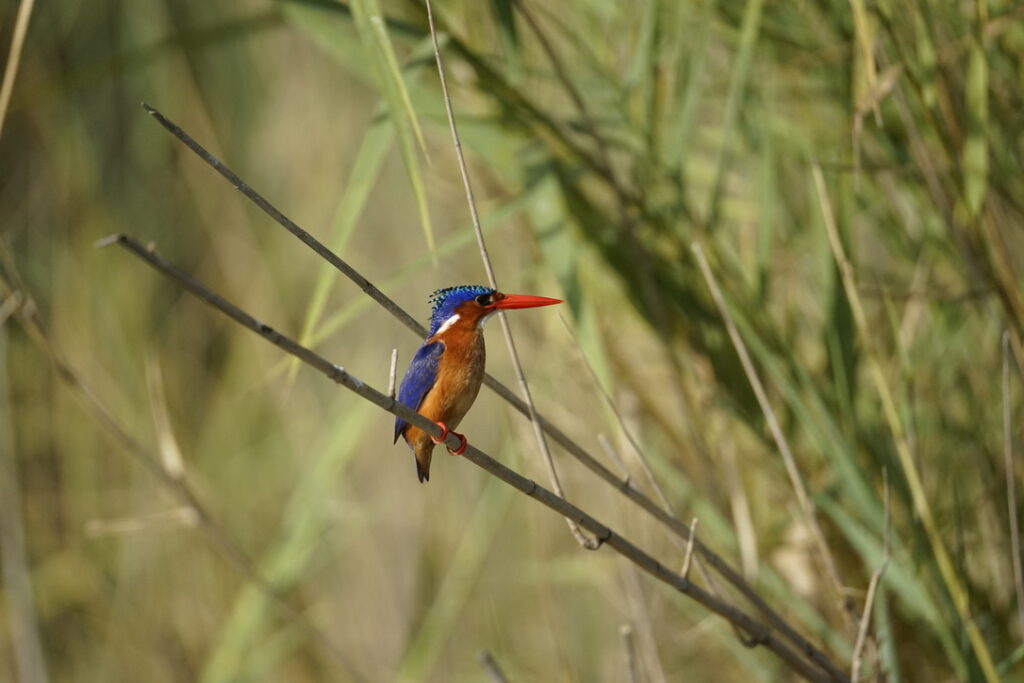
Lake Rwihinda
For my fellow bird watchers, I have not forgotten about you! Head north to Lake Rwihinda, a shallow lake (± 7m) rich with biodiversity. The lake supports an abundance of birdlife and other wildlife. It’s calm, scenic, and perfect for a slower travel day. Whether you’re an avid birder or just in need of some lakeside serenity, this spot is worth the detour.
Local Culture and Traditions
Burundi’s culture is a vibrant tapestry of traditions and customs. The local communities are known for their warm hospitality, which makes visitors feel right at home. After all, it is known as the HEART OF AFRICA! Engaging with the locals offers a unique opportunity to learn about their way of life and rich history.
Royal Drummers of Gishora
If there’s one cultural experience you cannot miss in Burundi, it’s witnessing the legendary Royal Drummers of Burundi. It was the whole reason why we wanted to visit this nation! The energy is absolutely electric. Even while rewatching my footage, I can still feel the drumbeats thundering through me… it’s that powerful.
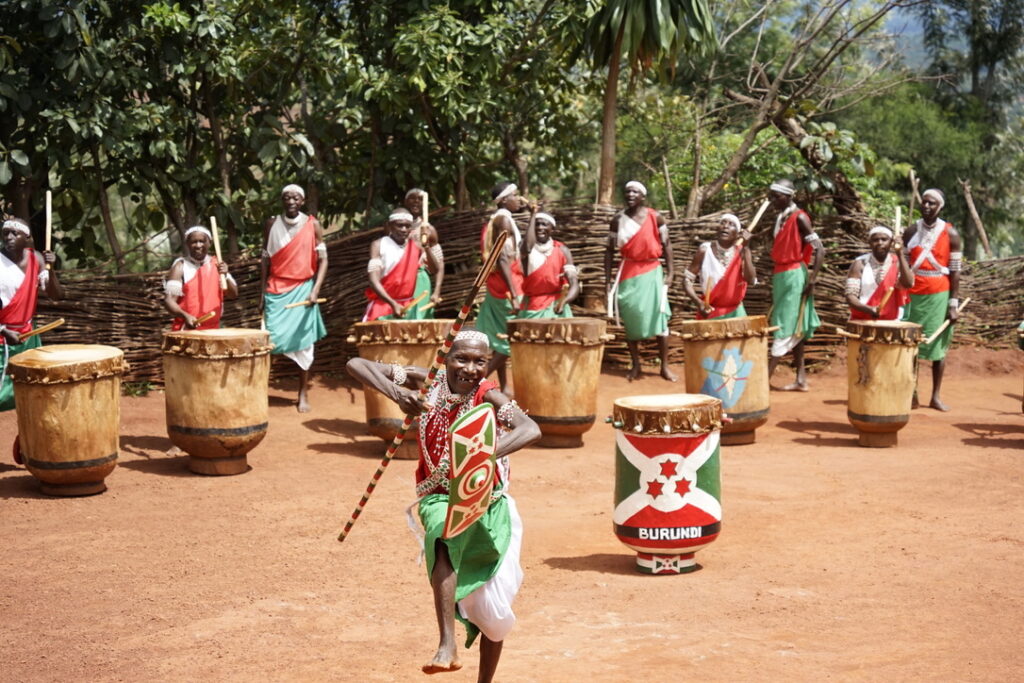
The performance features the ingoma, traditional Burundian drums crafted from hollowed-out tree trunks and stretched animal hide. Each drum plays a unique role: there are “female” and “male” drums, each producing distinct rhythms that together create a mesmerizing, almost trance-like atmosphere. One of the largest drums weighs 91 kg (!!!), and yes, the performers balance it on their heads during the grand procession!
Historically, these performances were reserved exclusively for royalty, but today, they are open to the public as a way of preserving and celebrating Burundian heritage. It is also now recognised as a UNESCO Intangible Human Culture so a definite must see. We were lucky to have the whole local community join us to watch the drummers in action. It felt like a true cultural celebration, full of pride and power. It was such a spectacular experience and one definitely worth travelling for.
Intore Warriors
We had the opportunity to see the Intore warriors in Burundi. Dressed in their distinctive regalia and wielding spears and shields, perform a traditional dance that would have been usually performed at the end of a battle for the leader, whether they won or lost. The story telling would re enact how brave and powerful they were during the battle. It’s captivating, symbolic, and deeply rooted in history.

The headdresses, made of sisal and dyed to resemble lion manes, sway dramatically with each jump, adding to the energy and majesty of the performance. The leopard skin used to cover their privates would be from the leopard that they had personally killed as a symbol of manhood and a right of passage.
Historically performed for kings and during major ceremonies, today the Intore dance is kept alive through public performances, allowing travellers a rare window into the ancestral pride of the region. We watched their performance under a moody, overcast sky, which only amplified the energy and intensity of the dance.
Batwa Communities
An incredibly humbling experience we had was visiting the Batwa community. Ths is one of the country’s original and most marginalized indigenous groups. Known as skilled potters and forest dwellers, the Batwa people of Burundi have a rich cultural identity that predates modern borders and governments.
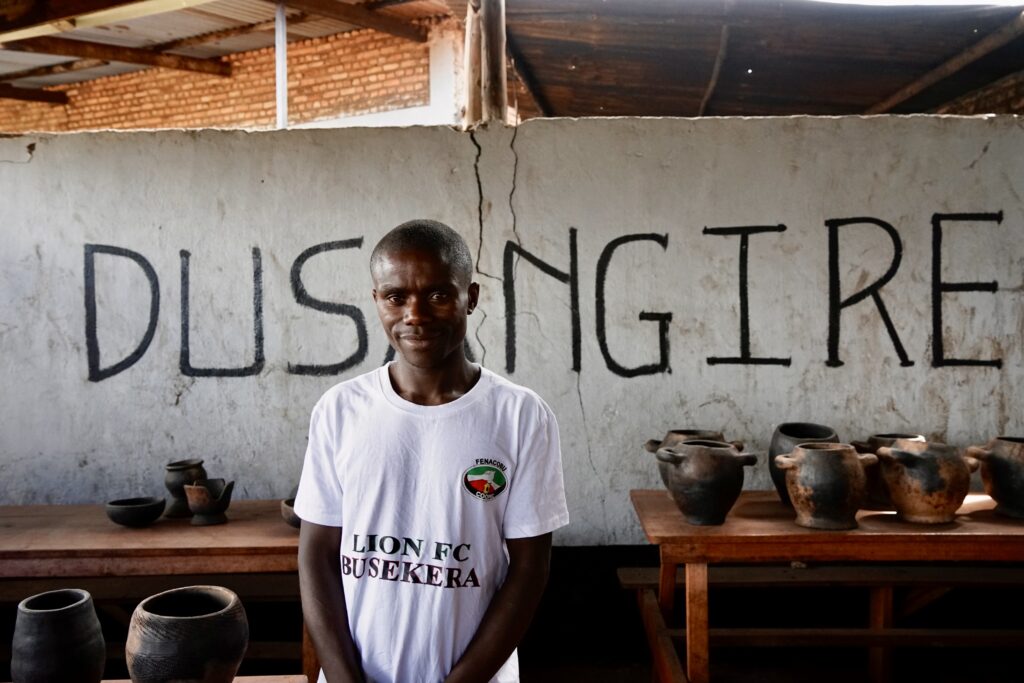
We were welcomed with traditional singing and dancing, their voices carrying centuries of resilience, pride, and connection to the land. They performed barefoot creating rhythm through their stomps and claps. Despite generations of displacement and discrimination, the Batwa continue to celebrate and share their heritage, preserving their customs through music, craft, and storytelling.
The joy and strength within the community was palpable, even as they navigate life on the fringes of society. Engaging with the Batwa offered a rare window into Burundi’s indigenous roots and a chance to reflect on cultural preservation, dignity, and equality.
Monuments
Source of the Nile
Tucked away in the scenic hills of southern Burundi lies one of Africa’s great geographical mysteries… the southernmost source of the Nile River. While Egypt often claims the glory of the Nile, Burundi quietly holds one of its most significant secrets: the farthest headstream of the Nile, beginning from a spring nearby.
This site marked by a small pyramid replica built by German explorer, Dr Waldecker whom discovered the southernmost source of the White Nile in 1937. A water droplet from this spring would travel 6 600 km towards the north, through 11 countries before emptying into the Mediterranean Sea. While this isn’t the only source of the Nile, the Burundian point is widely accepted as the southernmost origin based on water flow and elevation.
Livingstone-Stanley Monument
Just 12 km south of Bujumbura, overlooking the shores of Lake Tanganyika, stands a quiet rock slab with historical significance. This is the site where explorers Livingstone and Stanley are believed to have camped and met in 1871, as part of their famous African explorations.
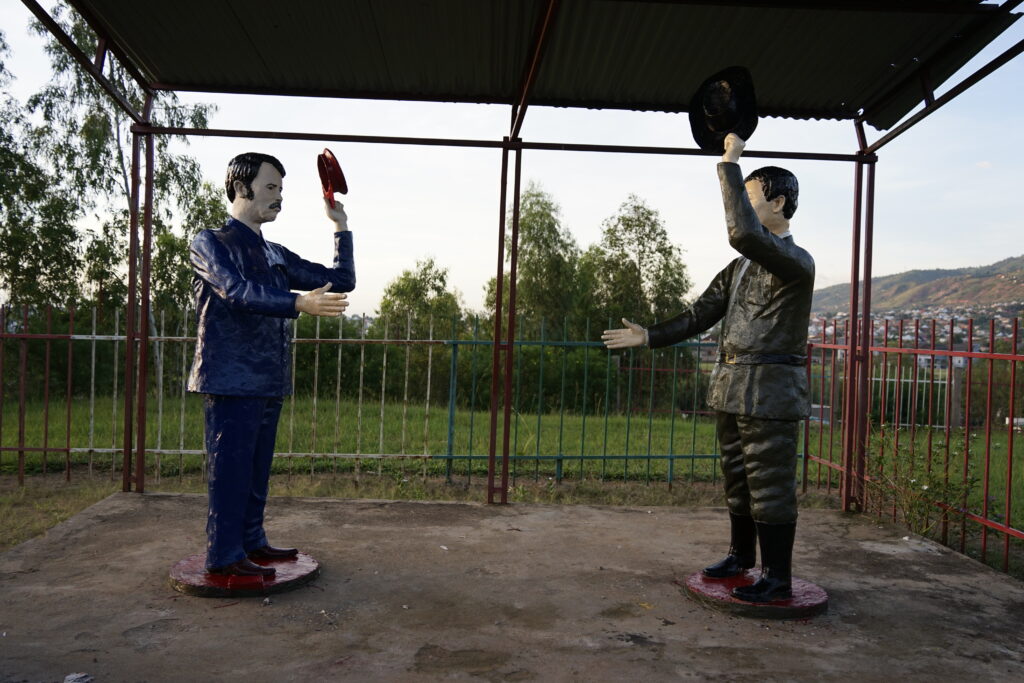
Though often overshadowed by the more dramatic “Dr. Livingstone, I presume?” encounter in Tanzania, this monument marks a later meeting and a strategic moment in their travels as they documented the African interior for European audiences. The monument commemorates two explorers whose controversial legacies include both path breaking geographic discoveries and their roles in colonial history.
Essential Travel Tips for Burundi
Tourism is still developing
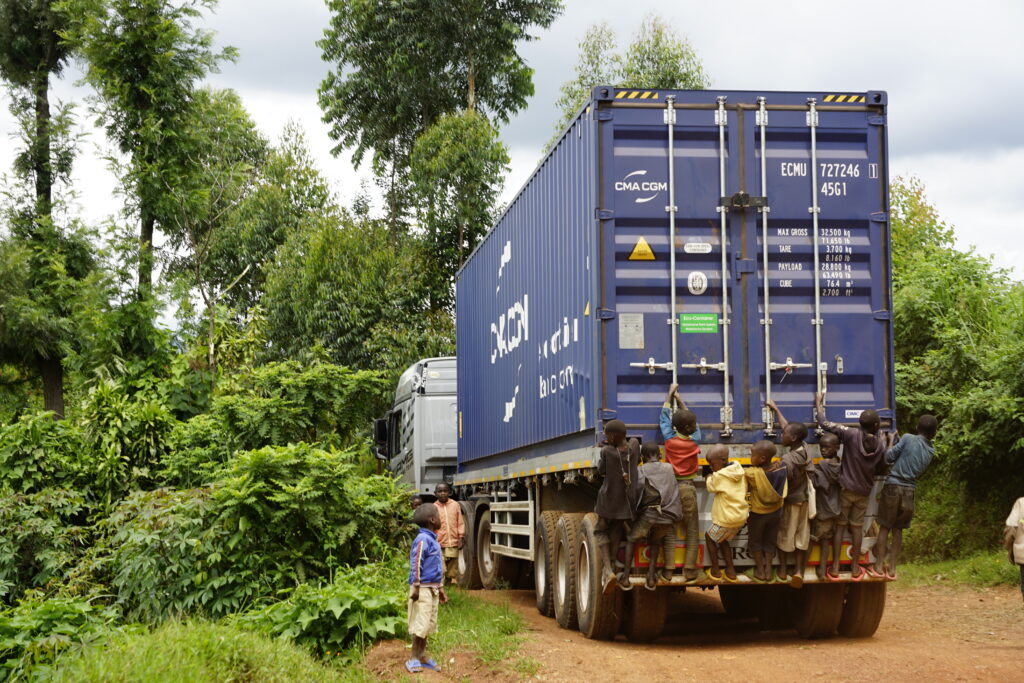
If you’re expecting the creature comforts or luxury travel, then maybe Burundi isn’t the place for you right now. It is raw and tourism is still a very much developing industry. Cellular data is a struggle – our home network providers did not provide service in Burundi. WIFI is sporadic and spotty.
While driving through the local communities, people will stare and many will say “muzunga” (white people in Swahili). This isn’t meant to be offensive but rather a state of awe. There isn’t a lot of foreigners here so kids will act with excitement and wonder mainly because we just look a bit different. Just come with an open heart and you’ll be pleasantly surprised by Burundians.
Whilst English is an official language, many in the countryside do not speak it. Majority of the people we met in the tourism sector did speak English (all spoke French) and in the countryside – you’ll have better luck with French or Kirundi.
Safety and Health Considerations
Like with anywhere, be sure to check the Safety advices from your local government. However, it is tricky since for most governments, Burundi is on the do no travel/high risk list. I would take it with a grain of salt. Reach out to local contacts/agencies (like Burundi Discovery Tours 😉 )to check the situation on the ground and keep up with any potential news that comes out of the country.
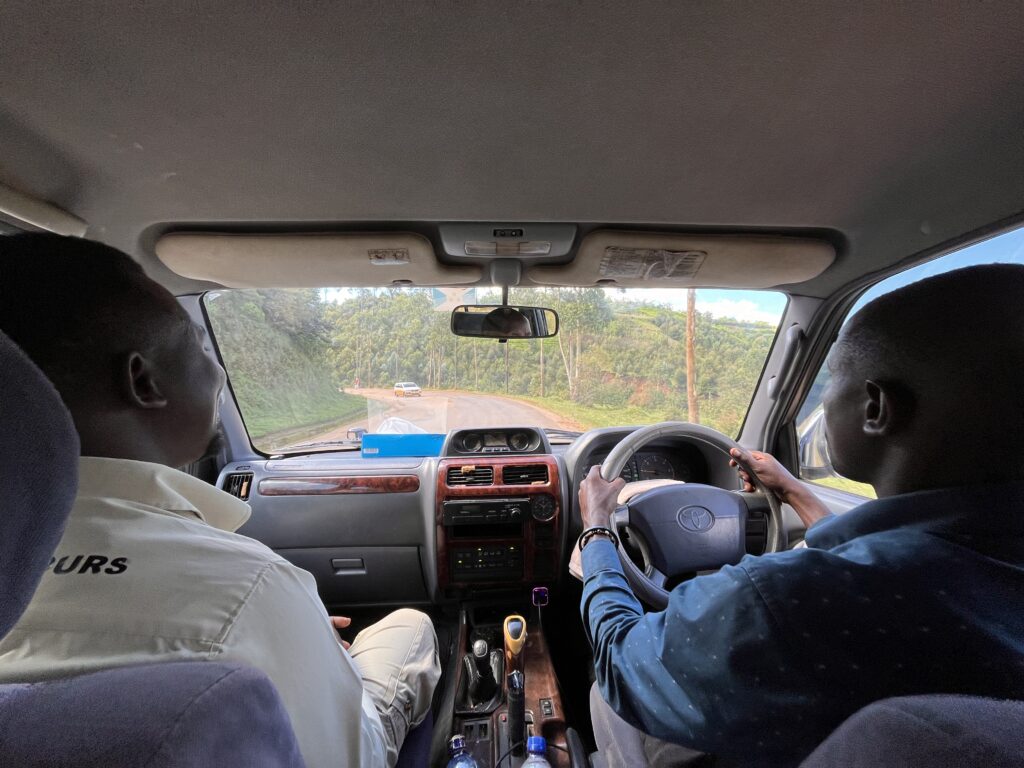
Health precautions are equally important. The yellow fever vaccination is mandatory so ensure that you have it before arriving. While they did not ask to see our vaccinations, they might want to see yours. Malaria can be prevalent here so keep with malaria prevention measures, like mosquito nets and repellents. This is strongly advised due to the tropical climate of Burundi.
Tap water is not drinkable here. As a general rule, when brushing your teeth, keep with using bottled water and stay hydrated with bottle water as well.
When should you visit?
We’ve been informed that the best time to visit Burundi is during the dry season – from June to August. During this period, the weather would be hot but with the road conditions, it might make navigating the country easier and more ideal since most of what you will probably be doing are outdoor activities and exploration.
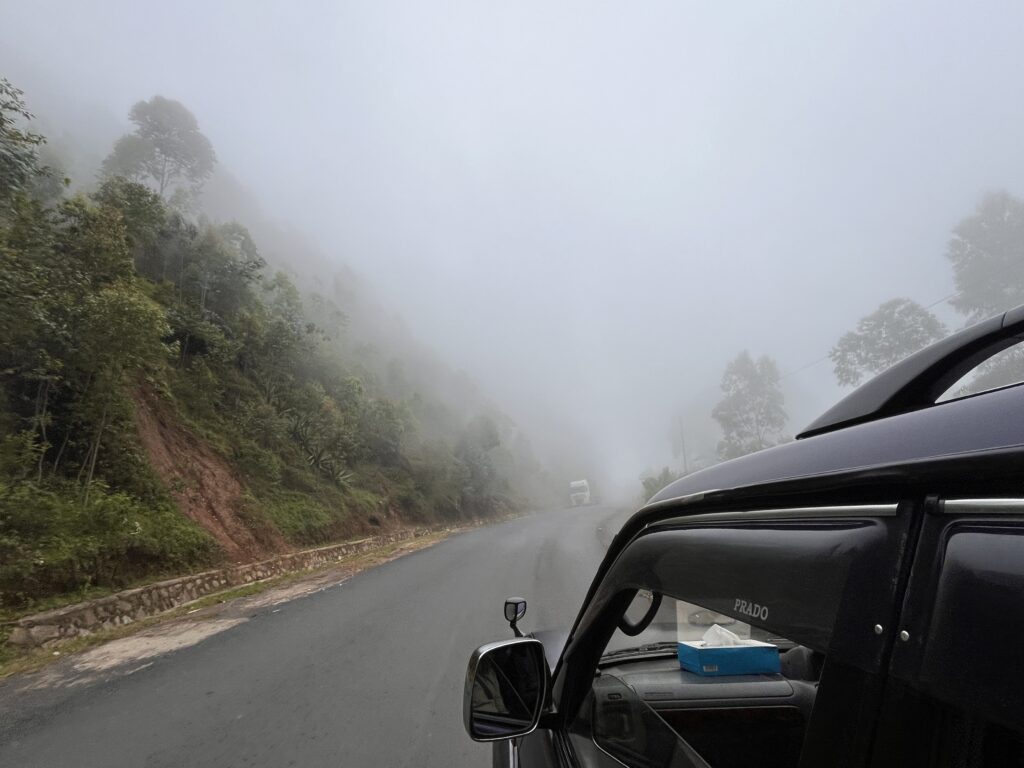
The wet season, from October to May, brings heavy rains that can disrupt travel plans. However, it also offers lush landscapes and fewer tourists, providing a unique perspective of the country. We travelled during the tail end of the wet season and were fortunate enough to only have one downpour during our time (last day in the country). I may recommend travelling during the shouldering seasons as the tourism numbers are lower so you might have most of the places to yourself!
Packing Essentials for Burundi
Packing for Burundi was a bit tricky for us since there’s not too much information readily avaiable. However, this is a quick overview on what I would recommend future visitors bring.
- Lightweight, breathable clothing for the warm climate. Bujumbura is HUMID.
- Linen shirt would be your best friend here.
- Rain jacket if visiting during wet season.
- Decent pair of hiking boots for trekking adventures
- Mosquito repellent. Most hotels would’ve provided a mosquito net.
- USD. You can withdraw money from the ATMs but you’re in a better position to bring USD and exchange it as you go, while you’re there.
- Power outlet: European
- Sense of adventure and flexibility! Things can change so be open and go with the flow 🙂
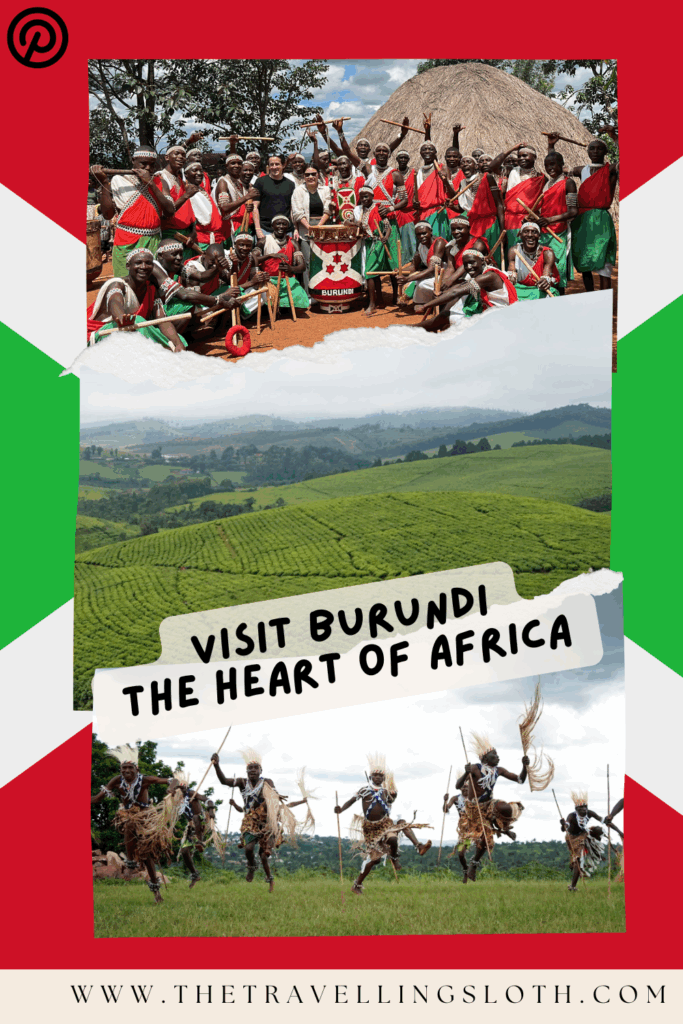
There is so much this little country in the Heart of Africa has to offer, and with the right attitude, it can be enjoyed by the intrepid traveller. The country is still trying to find its legs after its recent complex histories but don’t let that stop you from visiting. There are some amazing companies out there to support – take for example our tour guide Charles from Burundi Discovery Tours. We wouldn’t have had the connection to local communities and supported the local economy as much without him. He also supports the local communities and enriches individuals in the tourism industry with suggestions on improvements and changing the mindsets.
Don’t sleep on Burundi, experience the Heart of Africa.
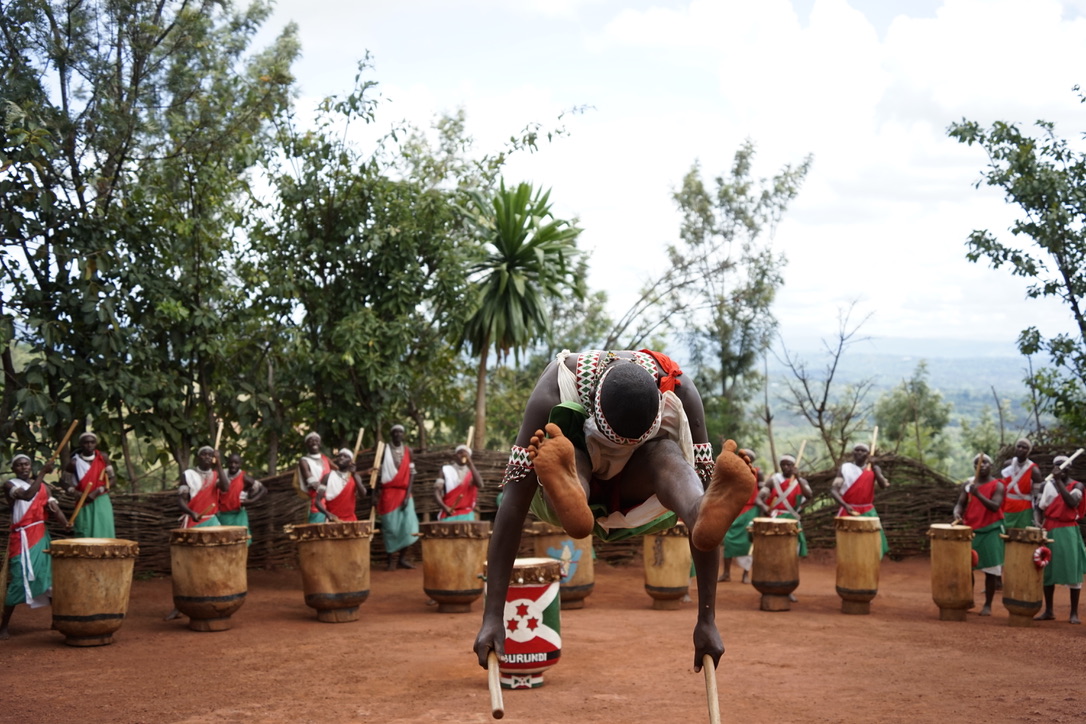
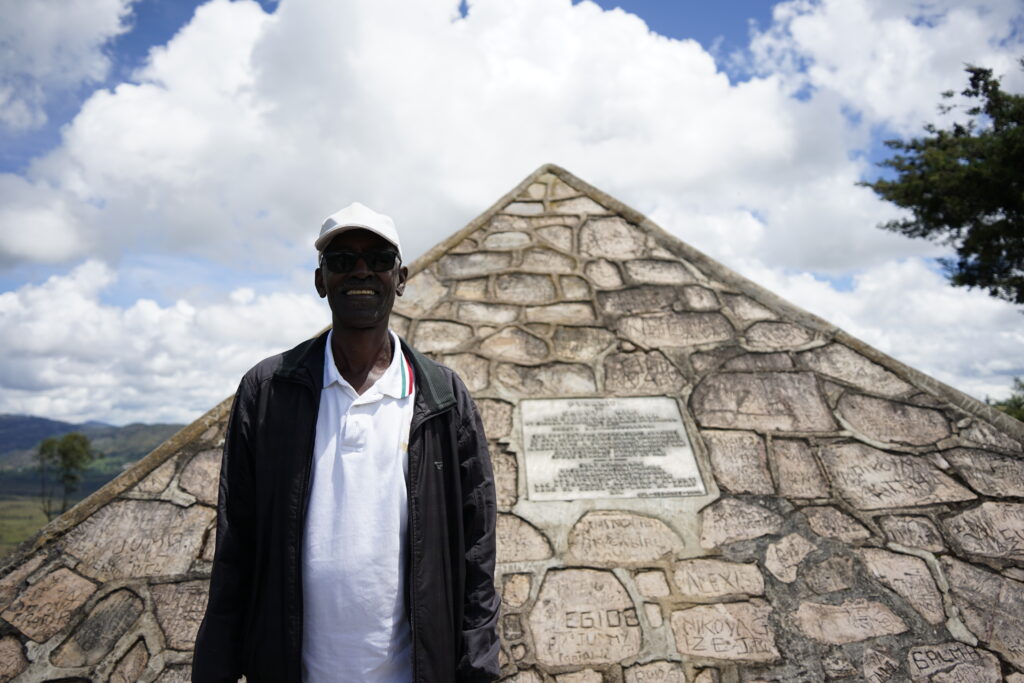
Leave a Reply